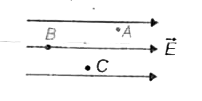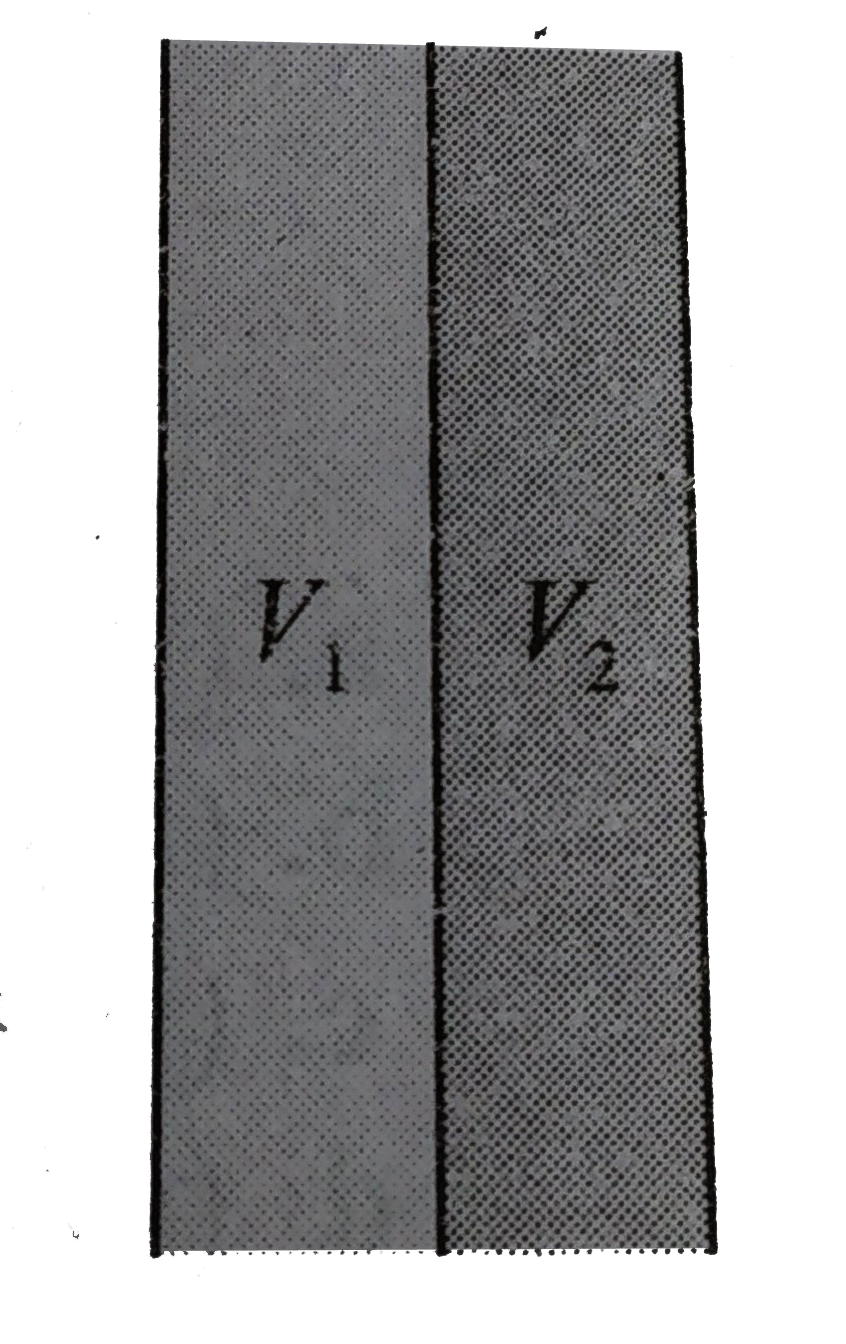Consider a uniform electric field in the ˆz direction. The potential is a constant.
in all space.
for any x for a given z.
for any y for a given z.
on the x-y plane for a given z.
The correct Answer is:B, C, D
As we know that electric field is perpendicular to the equipotential surface. In this case, the uniform electric field is there in the ˆz direction (along Z-axis). Thus, the equipotential surfaces in the given situation are the x-y plane and the planes parallel to x-h plane. Thus, potential is constant for x-y plane of any x or y for a given value of z.
Topper's Solved these Questions
- BOOK - MODERN PUBLICATIONCHAPTER - ELECTROSTATIC POTENTIAL AND CAPACITANCE EXERCISE - Chapter Practice Test9videos
ELECTROSTATIC POTENTIAL AND CAPACITANCE
- BOOK - MODERN PUBLICATIONCHAPTER - ELECTROSTATIC POTENTIAL AND CAPACITANCE EXERCISE - Competition file (NCERT Exemplar Problems: Multiple Choice Questions Type-I)6videos
ELECTROSTATIC POTENTIAL AND CAPACITANCE
- BOOK - MODERN PUBLICATIONCHAPTER - ELECTROMAGNETIC WAVESEXERCISE - CHAPTER PRACTICE TEST14videos
ELECTROMAGNETIC WAVES
- BOOK - MODERN PUBLICATIONCHAPTER - MAGNETISM AND MATTEREXERCISE - CHAPTER PRACTICE TEST FOR BOARD EXAMINATION16videos
MAGNETISM AND MATTER
Similar Questions
Establish the relation between electric field and electric potential at a point. Draw the equipotential surface for an electric field pointing in +Z direction with its magnitude increasing at constant rate along -Z direction
View Solution(a) Draw the equipotential surfaces corresponding to a uniform electric field in the z-direction.
(b) Derive an expression for the electric potential at any point along the axial line of an electric dipoleView Solution
Knowledge Check
- Question 1 - Select One
For uniform electric field, potential difference between the plate is
A1ε0QAdB1ε0AdQCε0QAdD1ε0QdA - Question 2 - Select One
A, B and C are three points in a uniform electric field. The electric potential is
 AMaximum at BBMaximum at CCSame at all the three points A, B and CDMaximum at A
AMaximum at BBMaximum at CCSame at all the three points A, B and CDMaximum at A - Question 3 - Select One
Consider a uniform electric field E=3×103ˆiN/C. (a) What is the flux of this field through a square of 10 cm on a side whose plane is parallel to the yz plane ? (b) What is the flux through the same square if the normal to its plane makes a 60∘ angle with the x-axis ?
A10NC−1m2B20NC−1m2C30NC−1m2D40NC−1m2
Derive an expression for potential energy of an electric dipole in a uniform electric field. In which situation, the potential energy fo dipole is (i) maximum and (ii) minimum.
View SolutionA uniform magnetic field and a uniform electric field are produced, pointing in the same direction. An electron is projected with its velocity pointed in the same direction. What will be the effect on electron?
View SolutionLet there be a uniform electric field "E" existing along the positive X-direction.Assume electric potential to be zero at the origin.Potential at the point x=x0 is
View SolutionAn electron traveling in a uniform electric field passes from a region of potential V1 to a region of higher potential V2. Then
 View Solution
View SolutionIn a uniform electric field if a charge is fired in a direction different from the line of electric field then the trajectory of the charge will be a
View Solution

